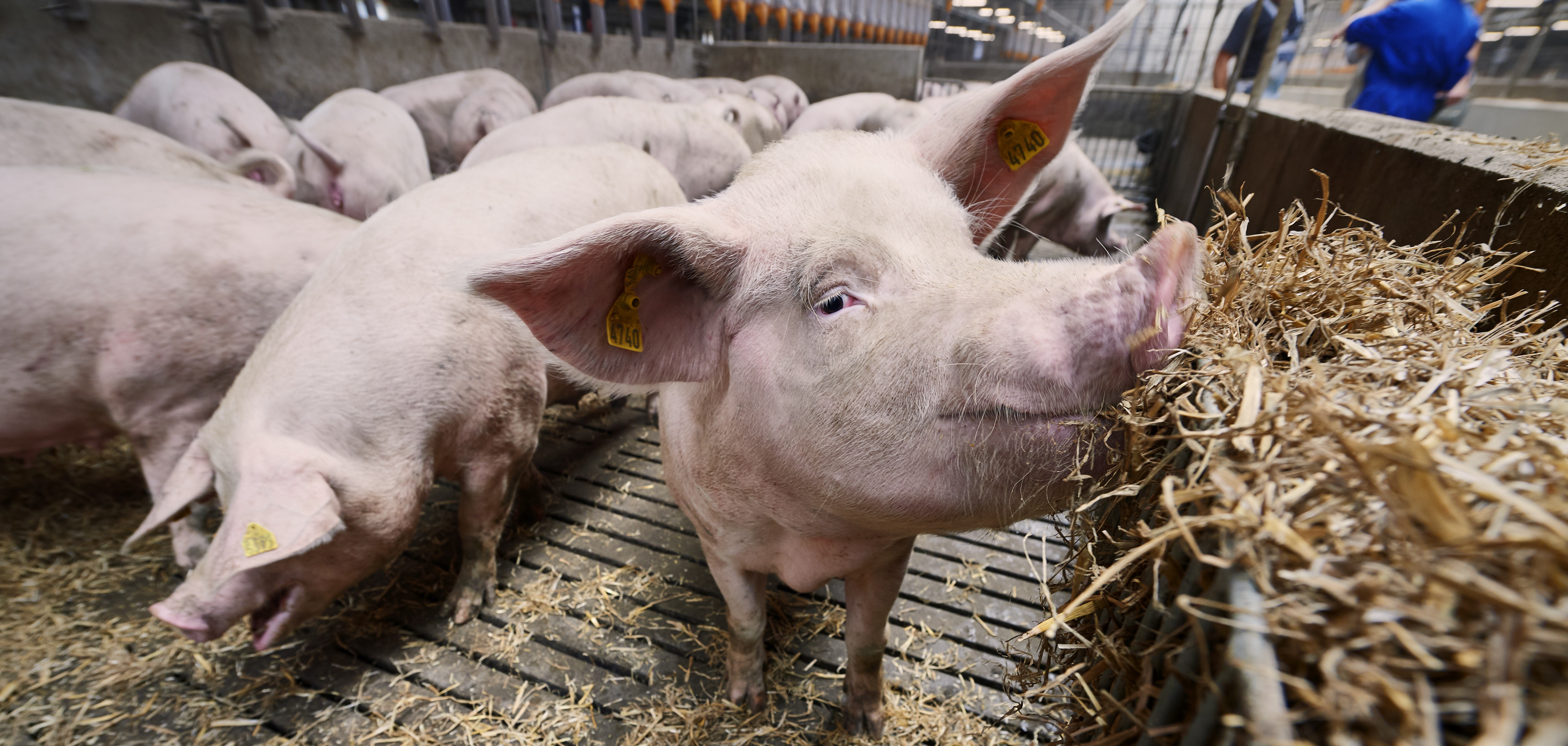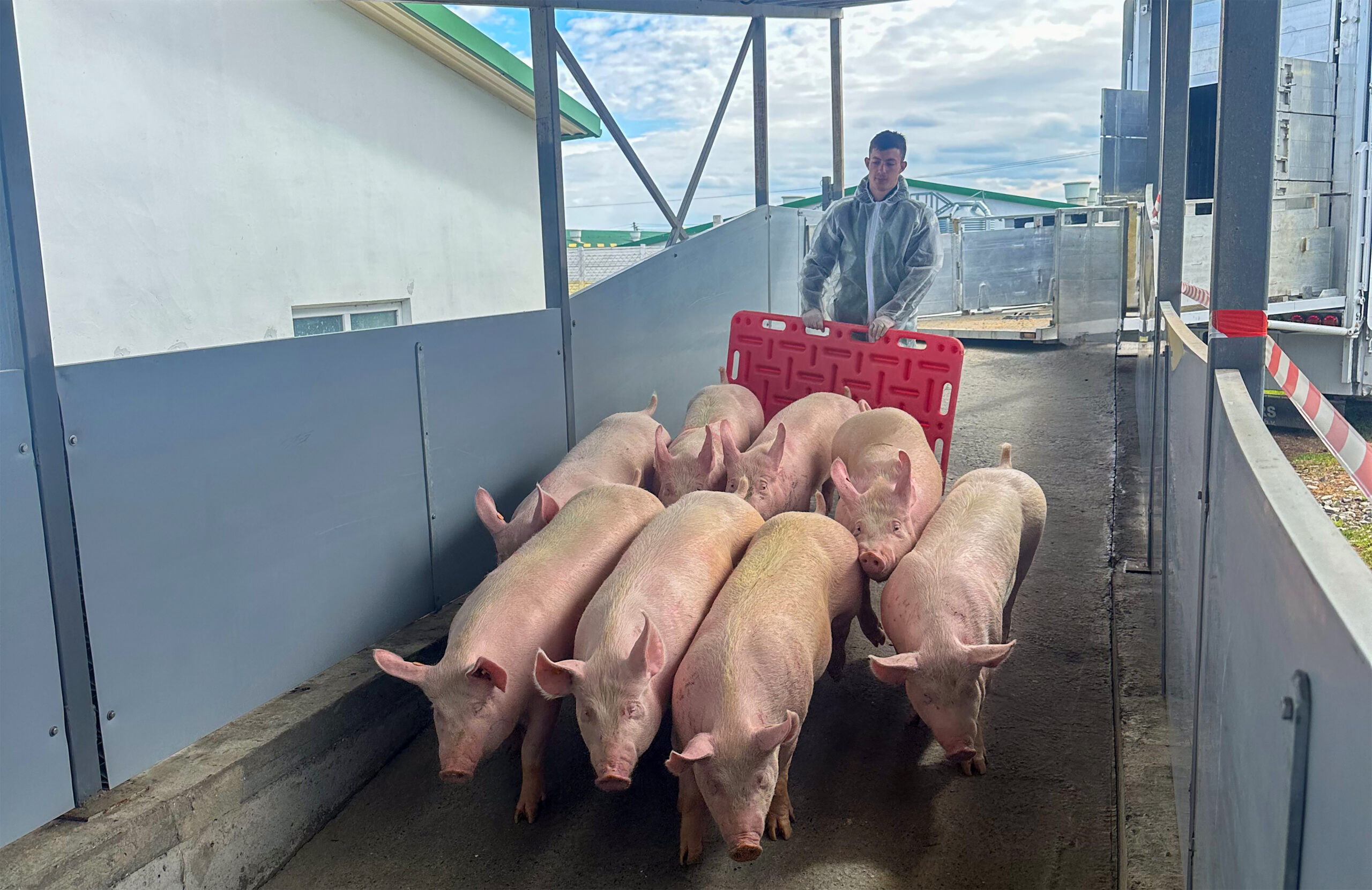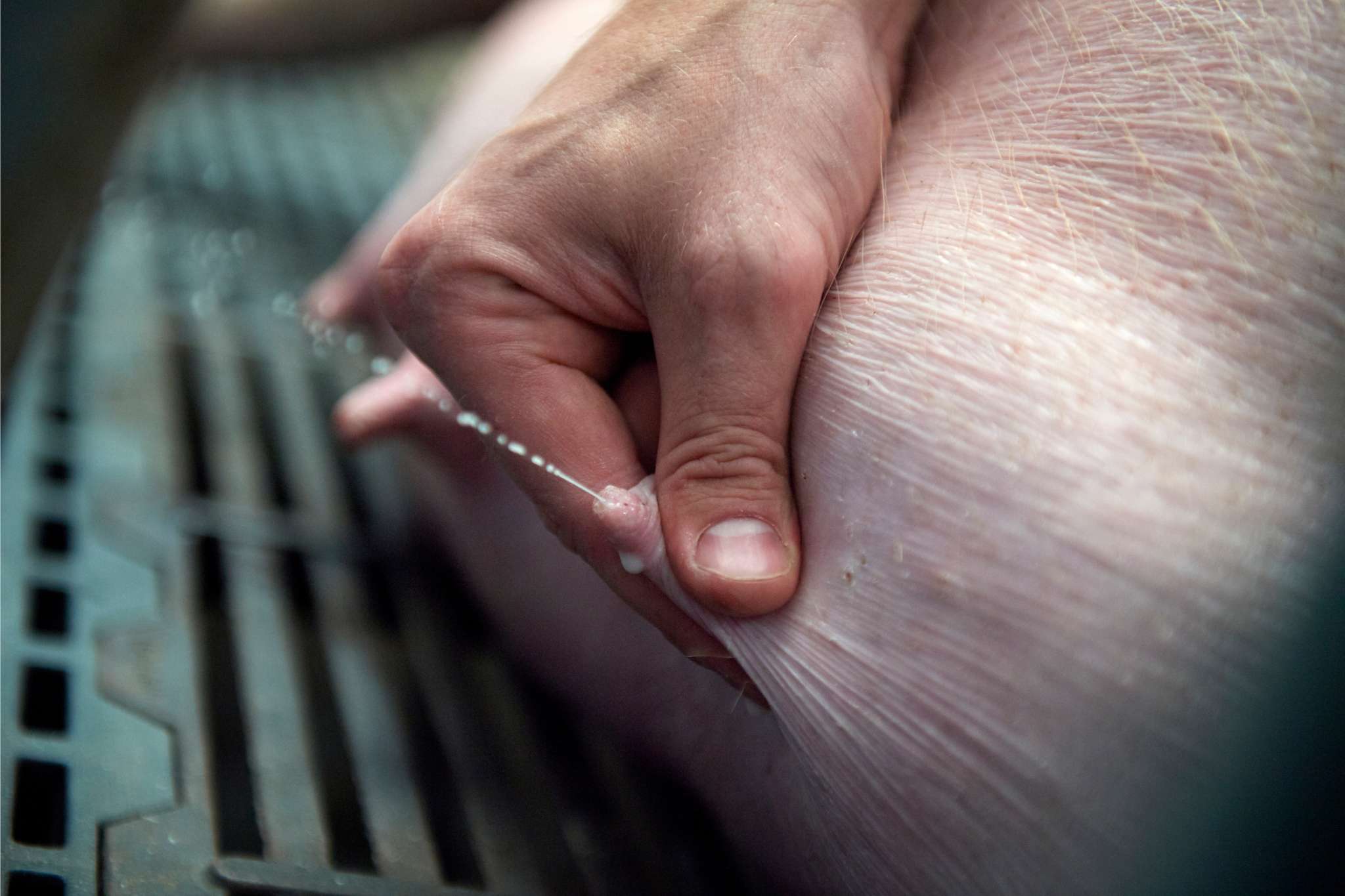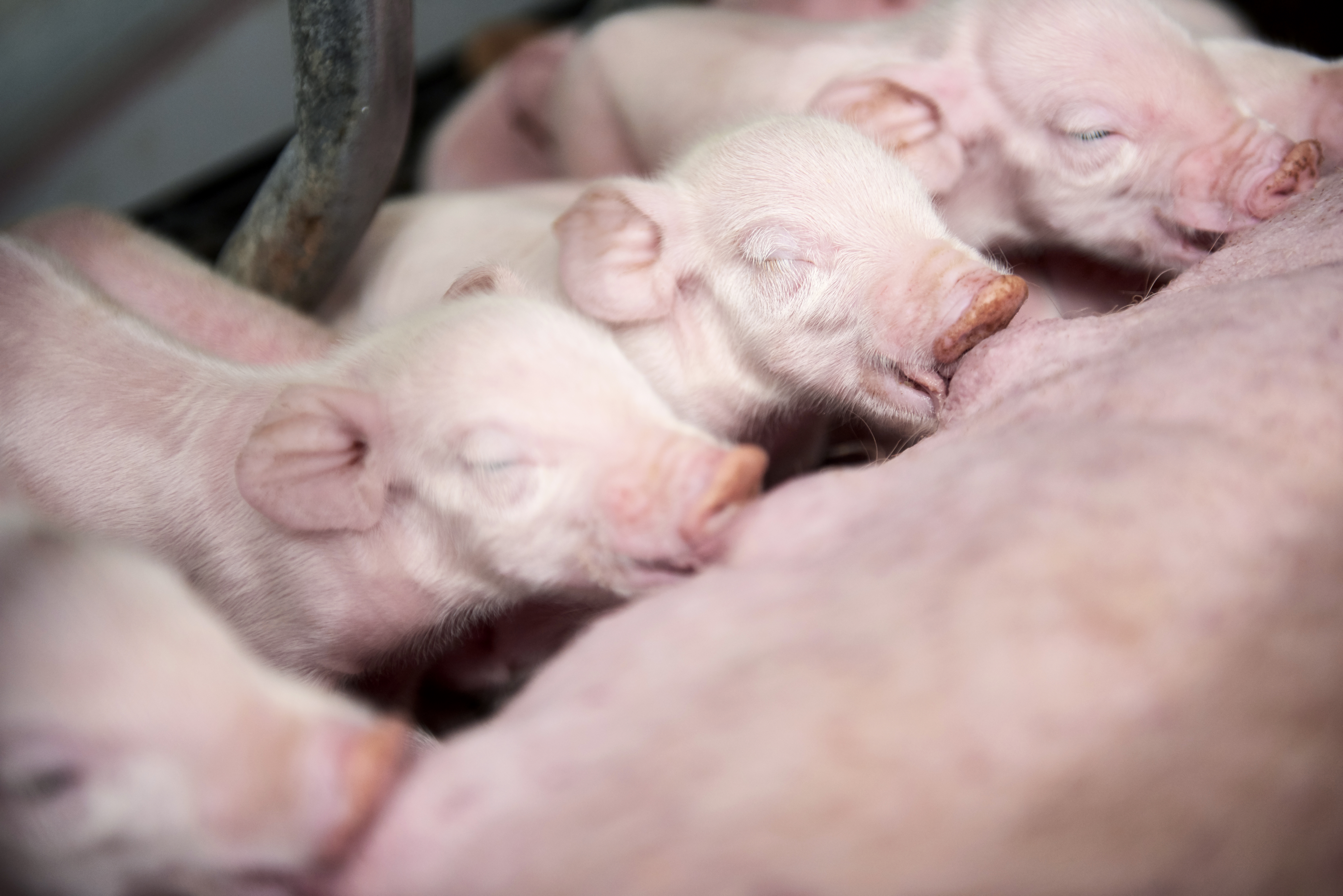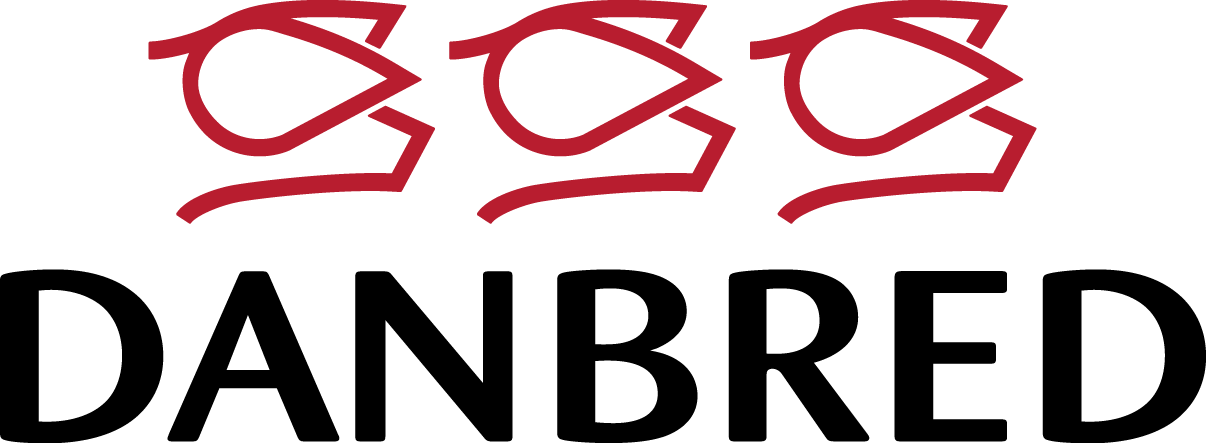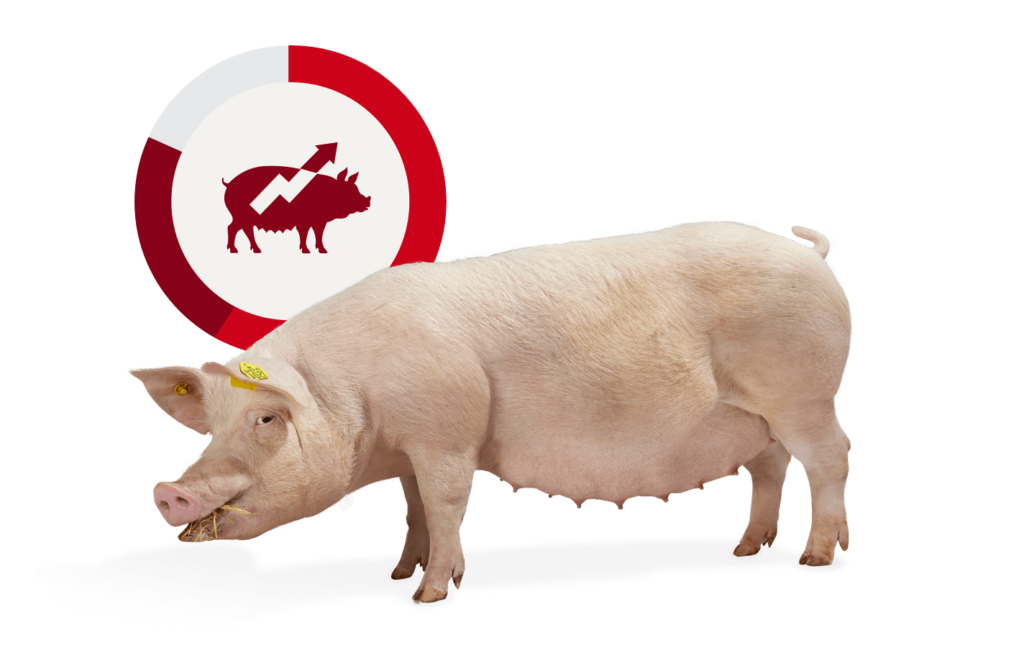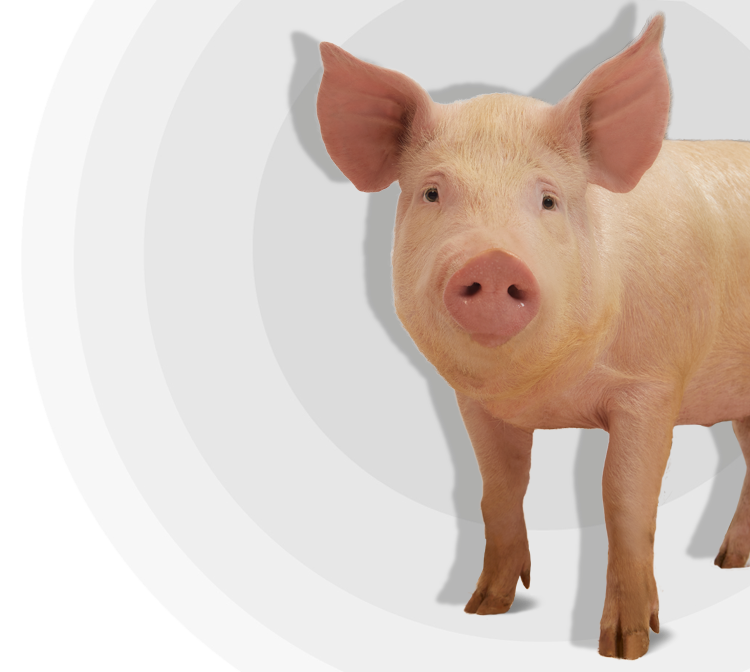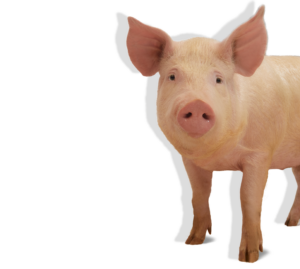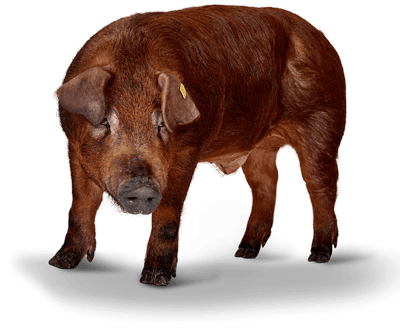Why social pigs are a gain for DanBred customers
Great news. The results from this unique study pave the way for new opportunities for setting even more balanced breeding goals that can improve productivity and welfare simultaneously. In the future, this means the inclusion of a new social trait in the DanBred breeding goal, which will improve genetic gain in daily gain by an additional 5 -10 %. Furthermore, this may also contribute to improved animal welfare – simply because a sweet and social pig is supporting its pen mates in a positive manner. At this very moment, Danbred has completed a large-scale selection experiment focused on “breeding for social pigs” and its effect on reducing excessive aggression, mounting behaviour and tail-biting. The final results are expected at the end of 2019.
Prologue by Helle Palmø, ph.d.
Improving productivity and welfare through breeding for social pigs
A pioneering study by the Danish Pig Research Centre confirms pig sociability as a relevant trait in the breeding goal. This new trait will add to the genetic progress and further to the daily gain and keep DanBred on the cutting edge of pigs’ genetics.
Positive social behaviours among pigs enhance the growth of pen mates and this tendency is passed down from generation to generation. In other words, it is heritable. A unique study performed by the Danish Pig Research Centre (DPRC) indicated how DanBred’s pigs, with a positive social genetic profile (social pigs), have a positive effect on the daily gain of their pen mates. When accounting for both the direct effect of the pig´s own genes and as well as the social genetic effect of others, the genetic gain in growth is potentially increased by 5 -10 %. This knowledge can be used to increase genetic gain for daily growth and improve the social behaviour and welfare of DanBred pigs. This was concluded as part of a large research project on DanBred Landrace pigs between DPRC and Aarhus University.
The study
The current study included the average daily gain (ADG) from 30 to 94 kg recorded on a total of 32.212 male and 48.252 female DanBred Landrace pigs. The pigs were raised in 13 DanBred nucleus herds in sex separated pens with between 8 and 15 pigs per pen.
During the study the genetic variation and heritability for direct genetic effects (the effect of a pig’s genes on its own growth) and for indirect genetic effects (the effects of a pig’s genes on the growth of its pen mates) were estimated. The results showed a significant genetic variance for indirect genetic effects for ADG in both male and female pigs, which indicates that it is possible to select pigs for sociability in relation to growth.
The heritability for the pig´s own genetic potential was 22 % and 24 % for female pigs, whereas the estimated total heritability (the direct and the indirect genetic potential combined) were 32 % for male pigs and 27 % for female pigs. This means that heritability increased by 45 % in male and 13 % in female pigs when accounting for the genetic background of social interactions, and that there is in fact an unused selection potential for growth. This potential can be used to make further genetic progress for ADG in DanBreds’ populations.
Predicting the social potential
In order to be able to conclude that genetic selection on social traits will result in genetic progress, it is necessary to account for all genetic variance. To overcome this very complex issue, DPRC also tested whether it would be possible to predict the genetic potential for social interactions purely based on the information from relatives. Unlike previous studies, this study shows very clearly that it is possible. In fact, the results showed that the so-called predictive ability for growth was improved by approximately 7 % when accounting for the genetic potential for social interactions on top of the genetic potential for the pig’s own growth. Predictive ability is an analogue to accuracy of selection, which is an indicator of how much additional genetic gain can be achieved for the benefit of DanBred’s customers.
Because previous studies have found gender differences in behaviour, this current study also hypothesized that test results may differ between male and female finishers. It is expected that male pigs show more aggressive behaviour than female pigs. However, the issue is more complex. In the current study, the results show that there is competition between female pigs, but none between male pigs. Senior scientist Birgitte Ask from DPRC explains:
“This study shows that female DanBred Landrace pigs, which have a high genetic potential for their own growth, tend to inhibit the growth of their pen mates, whereas this is not the case in male DanBred Landrace pigs. In practice, this means that if the genetic potential for social interactions is unaccounted for, then the realized growth of female pigs will be lower than expected based on their genetic potential for their own growth. This information is very important to maximise the genetic gain for growth, not least when estimating the genetic potential for growth in selection candidates in nucleus herds”.
When accounting for the above-mentioned differences between male and female pigs regarding genetic potential for social interaction, the predictive ability for male and female growth is improved by approximately 15 % and 4 % respectively. Altogether, this implies that accounting for gender differences can give an additional increase in genetic gain for growth. In particular as selection intensities are higher in males than females, improving the accuracy with which the genetic potential for growth of male selection candidates can be predicted has a larger impact on the selection response than an equivalent improve-ment in the accuracy for female selection candidates.
Improving own and pen mates’ growth
By considering the social genetic potential for growth in a breeding program, it will be possible to improve not only the pig’s own genetic potential for growth, but also the pig’s genetic potential to stimulate the growth of its own pen males. It is the hypothesis and goal that such an improvement will also lead to favourably correlated responses in damaging behaviours of group housed pigs. To test this hypothesis, DPRC recently completed another large-scale selection experiment with recordings of tail and ear biting injuries and skin lesions from fighting on approximately 4.500 crossbred offspring in 270 groups. Results from this experiment are expected by the end of 2019.
Such differences between sexes should be accounted for in the estimation of breeding values, which can lead to more precise breeding values and thereby increase the genetic gain.
The full scientific article has been published in the journal of Genetics Selection Evolution, February 2018. The work has been partially funded by the Green Development and Demonstration Program by the Ministry of Environment and Food of Denmark.
Read the full scientific article here.

